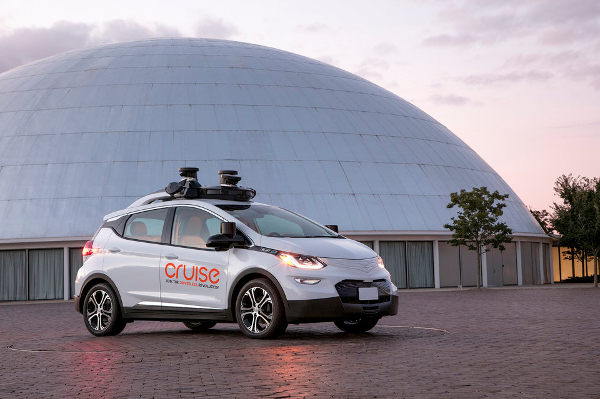 EMERGING TECH
EMERGING TECH
 EMERGING TECH
EMERGING TECH
 EMERGING TECH
EMERGING TECH
Developing self-driving cars is hard. That’s the main takeaway from the news today that General Motors Co. is the latest company to stumble in autonomous vehicle efforts.
According to Reuters, cars developed by GM’s Cruise unit, which first started on-street testing in 2016, are facing “some unexpected technical challenges,” including difficulty in “identifying whether objects are in motion.” Examples include the vehicles hesitating and stopping while passing rows of parked motorcycles or bicycles and sometimes failing to detect pedestrians.
Referencing a cast of current and former GM and Cruise employees, the report noted that GM’s previously stated goal of deploying a self-driving taxi service in 2019 may be in doubt as not one part of the development roadmap is currently on schedule.
GM Chief Executive Officer Kyle Vogt said that “early in development I’m sure there were phases where we were putting systems together where they didn’t meet the requirements we needed for launch, and that’s part of the testing and development process.” He added that the issues would be resolved before the vehicles hit the streets.
The company has been highly ambitious in its autonomous vehicle plans, announcing in January that it intends to start manufacturing vehicles without a steering wheel or pedals starting next year. Its quest to deliver self-driving cars is well-financed, with SoftBank Group Corp. and Honda Motor Co. Ltd. having invested $2.25 billion and $2.75 billion, respectively, into GM Cruise to assist in the development of the technology.
GM Cruise is not the first company to have problems developing self-driving car technology and it won’t be the last. A report in August claimed that autonomous vehicles from Waymo LLC that have been in a ride-hailing trial in Phoenix, Arizona, since November have problems turning around corners. In that case, the technology was said to be struggling to predict human nature.
More infamously, autonomous vehicles from both Tesla Inc. and Uber Technologies Inc. have killed passengers and pedestrians alike.
Support our mission to keep content open and free by engaging with theCUBE community. Join theCUBE’s Alumni Trust Network, where technology leaders connect, share intelligence and create opportunities.
Founded by tech visionaries John Furrier and Dave Vellante, SiliconANGLE Media has built a dynamic ecosystem of industry-leading digital media brands that reach 15+ million elite tech professionals. Our new proprietary theCUBE AI Video Cloud is breaking ground in audience interaction, leveraging theCUBEai.com neural network to help technology companies make data-driven decisions and stay at the forefront of industry conversations.